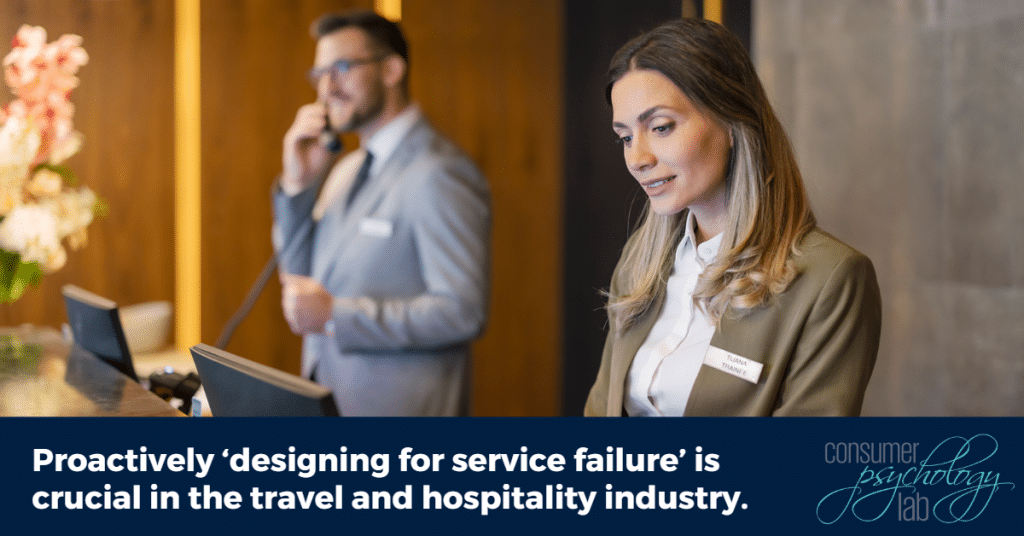Even when your customers love you, your products, the services you offer, or your staff, at some point you may be faced with an unhappy, disappointed, or dissatisfied customer. It could be a brand-new customer or a long-standing one; it could be something that you did or missed; or it could be something that was totally out of your control. When things do go wrong, it’s not always easy to manage these situations.
Most importantly when it comes to service recovery is how you handle it, because even the angriest customer can turn into your best advocate and a raving ambassador in the future. When something does go wrong, customers want to feel heard, valued, and understood. They want to know that their concerns are taken seriously and that you are committed to finding a solution that works for them.
What do customers really want when something goes wrong?
1. Empathy: “Hear me out” – Customers want you to understand their problem, their frustration, the inconvenience it caused or the effort and courage it took to bring it to your attention. They want you to look at it from their perspective. They want to feel that their issues are real to you. They want you to hear them and acknowledge their value to you.
2. Communication: “Talk to me” – Customers want you to tell them how you are addressing their problem, what you are doing about it, and what they can expect going forward.
3. Action: “Fix it or help me” – Customers want to know how you will fix the problem and see that you take action to resolve their problem.
4. Fairness: “Be fair to me” – Customers want you to treat them fairly and with respect and that their best interest is considered – not what works best for you only.
5. Follow-up: “Check in again” – Customers want you to care enough to follow up after the issue has been resolved to ensure that they are satisfied with the outcome.
To win back your customer’s trust and continued loyalty, you must design for service failures and empower your staff to navigate these situations. Consider the best way to manage the service failure by crafting a plan that outlines the process to follow. Empathy, clear and timely communication, action, fairness, and closing the loop, are crucial elements to include in your plan to for the best outcomes in service recovery. The second element is to ensure that your employees are empowered to manage the situations.
Do your employees know how to handle difficult service recovery conversations?
The employees who deal with customers are central to the service recovery process, so make sure they know how to handle this sensitive stage of the customer experience and relationship – from what to do and what they can offer as a solution, to how it’s delivered, right down to language and tonality.
1. Provide training: on how to handle difficult conversations. This could include role-playing exercises, communication skills training, and conflict resolution training, providing a customer service manual and a list of frequently asked questions (and appropriate responses!).
2. Set expectations: for how employees should handle difficult conversations such as guidelines for how to listen actively, how to acknowledge the customer’s concerns and that includes use of language and tone, and how to offer solutions.
3. Encourage empathy: Encourage employees to put themselves in the customer’s shoes and to approach the conversation from the customer’s perspective. Empathy goes a long way to defuse tensions and build rapport with the customer.
4. Offer support: Offer employees support during difficult conversations by having a manager or supervisor available to step in if needed.
5. Provide feedback: Provide employees with feedback on their performance during difficult conversations. This can help them to improve their communication skills and build their confidence. Recognise employees who go the extra mile to solve a customer’s problem or to keep a customer.
By empowering employees to handle difficult conversations during service recovery, you can ensure that your customers are taken care of and that their concerns are addressed speedily and professionally. Much of this is dependent on proper training and guidelines so that staff know what to do BEFORE things go wrong and are not left floundering in the heat of the moment.
What should those service recovery conversations with customers sound like?
Here are some tips for how those recovery conversations with customers should sound like:
1. Listen actively: Begin the conversation by actively listening to the customer’s concerns and allowing them to express their frustration and acknowledge their feelings, and only then respond. Example: “I’m sorry to hear that you’re disappointed with your room. Can you tell me more about what you expected around the amenities we offer?
2. Empathise: Show empathy towards the customer by putting yourself in their shoes and acknowledging their inconvenience.
Example: “I can understand how frustrating it is to wait for a technical issue to be resolved. I’m sorry for the inconvenience this has caused. Let me find out how we can support you with your arrangements to get to your connecting flight.”
3. Offer solutions: Offer alternative solutions to address the customer’s concerns – it may mean providing an upgrade, a complementary service, a discount, a refund, or making alternative arrangements.
Example: “I am sorry for the disruptive noise in the room. We can offer you another room with a complimentary meal, or we can offer you a discount on your overall stay. What would you prefer?
4. Take responsibility and be accountable: Take responsibility for the situation and show the customer that you are committed to finding a solution that works for them.
Example: “I am sorry for the inconvenience this has caused. We are committed to finding a solution and I will see to it that we resolve the issue for you.”
5. Follow up: Personally follow up with the customer afterward to ensure that the customer was satisfied with the service recovery measures. It demonstrates that the outcome of the service recovery matters to you and leads to a more positive customer experience overall.
Example: “Thank you for your patience while we tried to resolve the problem. How did you enjoy the complimentary meal? Is there anything that you would like to bring under my attention to improve our service to you?“
Remember to listen actively, empathise, offer solutions, take responsibility, and follow up. These best practices can help turn a negative situation into a positive customer experience.
By ‘designing for failure’ and having a plan in place for service recovery measures on all the potential things that can go wrong, you can ensure that customers and their service delivery issues are taken care of speedily and efficiently, and that the relationship remains intact, if not stronger.
These best practices can help turn a negative situation into a positive customer experience and turn an angry and disappointed customer into a raving ambassador simply because your customer felt heard, appreciated and that you took genuine steps to resolve their troubles.
By acknowledging the customer’s issue, taking ownership of the problem, and offering a solution, service teams can turn moments of misery into moments of magic and opportunities to build advocacy and loyalty.
Case Study: Best practice for service recovery measures in the travel and hospitality industry
Proactively ‘designing for service failure’ is crucial in the travel and hospitality industry, where unforeseen circumstances such as flight cancellations, overbookings and maintenance issues can and do occur. Consider these best practices for service recovery measures in the hospitality and travel industry:
1. Be proactive: If you know that there is a maintenance issue or overbooking, contact the guest as soon as possible and offer a solution. This could include finding alternative accommodation or offering a discount on a future stay. By being proactive, you can prevent or at least reduce guest frustration and disappointment.
For example, if a customer’s flight is delayed, inform passengers about the situation as soon as possible, what is being done to resolve the issue, what compensation or alternative travel arrangements are planned, and by when matters should be resolved. In the accommodation industry, if a guest experiences a maintenance issue or overbooking, they expect alternative suitable accommodation or compensation. Your guests want to know that you value their business and that you’re committed to finding a solution that works for them.
2. Offer compensation: If a guest experiences a major inconvenience such as a power outage or a noisy construction site or maintenance issues, offer compensation such as a refund or a complimentary stay. Show your guests that you value their business and will make things right.
3. Provide alternative options: If a guest is unhappy with their room or location, offer alternative options such as a room upgrade, or even moving them to a different property.
4. Empower your employees: Empower your employees to handle service recovery measures – this requires having a plan and providing the tools and training that they need on how to handle guest complaints and what solutions they can offer. This ensures that guests are taken care of quickly and efficiently and your staff aren’t left fumbling about trying to figure out the next steps.
For example, if a reservation has been lost, hotel staff should immediately apologise and offer alternative accommodation, even if it means finding a room at a nearby hotel or upgrading the room at no extra cost. Offer compensation such as a discount or complimentary meal. Make sure the remedy is appropriate for the problem and that employees know what remedies they can offer, and under what circumstances.
5. Follow up: After the guest has checked out, follow up with them to ensure that they were satisfied with the service recovery measures taken. This shows that you value their feedback and are committed to continuous improvement.






